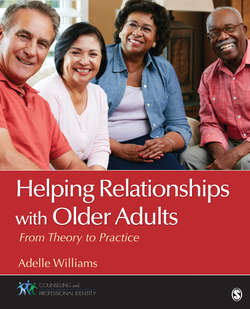Читать книгу Helping Relationships With Older Adults - Adelle M. Williams - Страница 20
На сайте Литреса книга снята с продажи.
Cross-Linkage Theory of Aging
ОглавлениеThe cross-linkage theory of aging proposes that the physical changes seen on the body result from the accumulation of cross-linking compounds in the collagen, which gradually become more numerous. Cross-linking is side-by-side (lateral) linking in which two or more adjacent molecules of a polymer (substance made up of a large number of smaller molecules) join to form a bigger molecule. Collagen is the most abundant protein in the human body and is the substance that holds the whole body together. The piling up of harmful molecules is thought to eventually impair cell function (Moody & Sasser, 2012). The accumulation of cross-linked collagen is responsible for such changes as the loss of skin elasticity, hardening of the arteries of the circulatory system, and stiffness of joints throughout the body. This accumulation also plays a role in the formation of cataracts and is connected to the decline of kidney function (Mitteldorf, 2010).
This theory contributes to our understanding of aging, but it does not explain the totality of the process. It explains that it is the binding of glucose (simple sugars) to protein (a process that occurs under the presence of oxygen) that causes various problems. Once this binding has occurred, the protein becomes impaired, and it is unable to perform as efficiently. Living a longer life is going to lead to the increased possibility of oxygen meeting glucose and protein. Also, in persons with diabetes, 2–3 the times the numbers of cross-linked proteins when compared to their healthy counterparts has been observed (Anti-Aging Today, 2013). This theory proposes that reducing the risk of cross-linking by reducing sugar (and also simple carbohydrates) in one’s diet would be helpful in the aging process.
